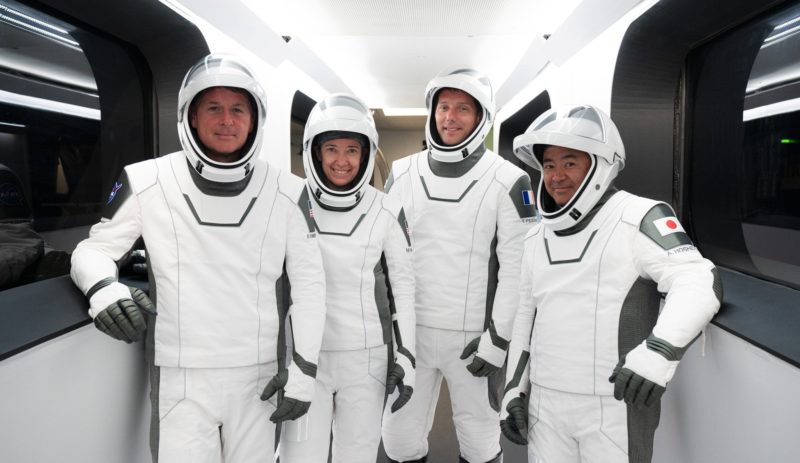
Four astronauts from three nations, with a combined year-and-a-half of spaceflight experience and a cumulative three days’ worth of Extravehicular Activity (EVA) in 11 spacewalks between them, are in the final stages of preparation for their “Earth Day” launch on Friday morning to the International Space Station (ISS).
Crew-2 Commander Shane Kimbrough and Pilot Megan McArthur, both seasoned NASA veterans, will be joined aboard Dragon Endeavour—the first orbital-class human-carrying space vehicle to be reflown since the final voyage of the Space Shuttle—by Mission Specialists Aki Hoshide of the Japan Aerospace Exploration Agency (JAXA) and Frenchman Thomas Pesquet of the European Space Agency (ESA).
Their liftoff is targeted for 5:49 a.m. ET on Friday from historic Pad 39A at the Kennedy Space Center (KSC) in Florida.
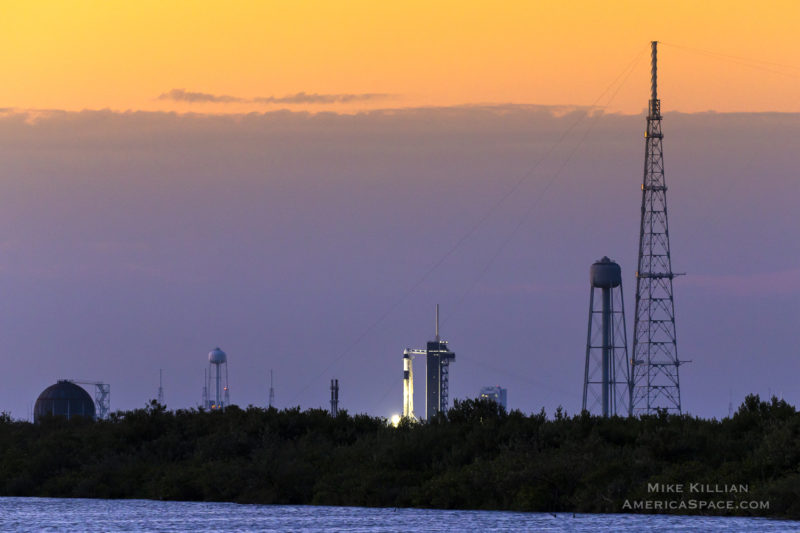
The astronauts entered their pre-flight quarantine phase—known as “Flight Crew Health Stabilization”—on 8 April and traveled via NASA Gulfstream aircraft from Ellington Field in Houston, Texas, to KSC on the 16th.
In the meantime, their 230-foot-tall (70-meter) Falcon 9 booster, with Dragon Endeavour perched at its tip, was rolled out to Pad 39A and elevated to the vertical on the 15th, furnishing Kimbrough, McArthur, Hoshide and Pesquet a spectacular view as they flew overhead.
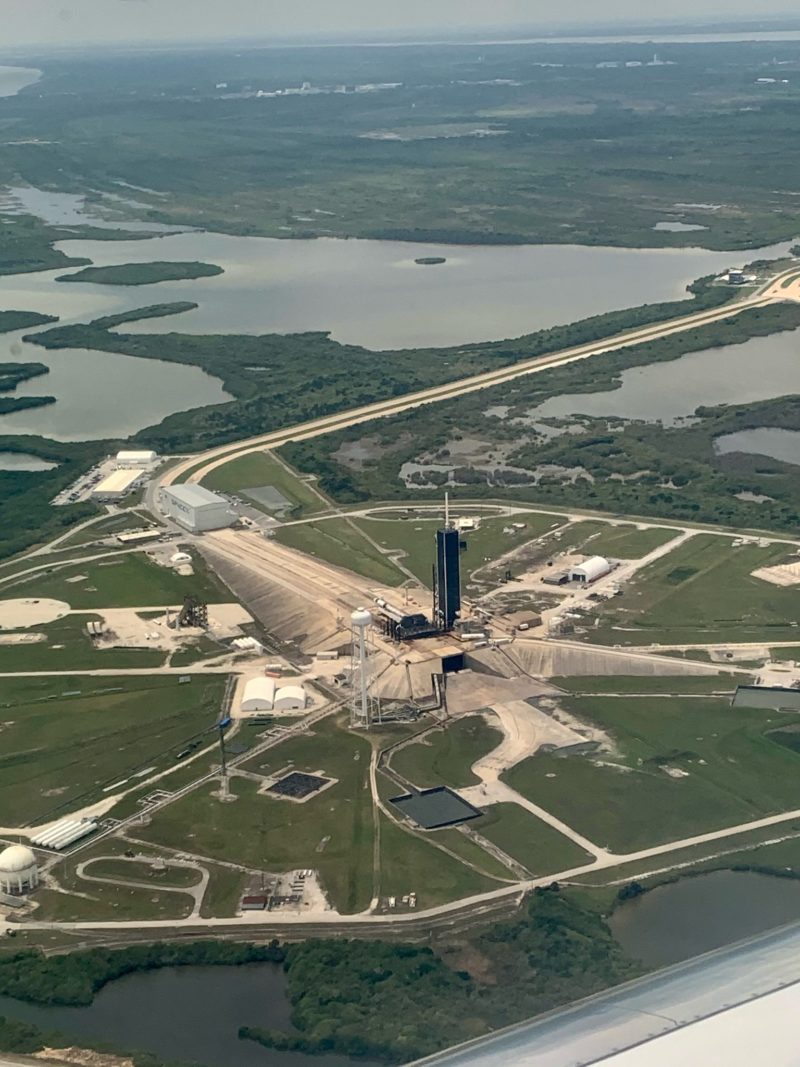
“It was a beautiful sight,” McArthur later tweeted, sharing an aerial perspective of the Falcon 9 at the pad.
Last Saturday, the Falcon 9—whose “B1061” core stage is making its second launch, having previously lofted Dragon Resilience to orbit last November—underwent a customary Static Fire Test of its nine Merlin 1D+ engines.
And on Sunday, the Crew-2 astronauts donned their custom-made SpaceX launch and entry suits in the Neil Armstrong Operations & Checkout Building, rode via Model X Teslas to Pad 39A and took their seats aboard Dragon Endeavour.
Interestingly, McArthur’s husband, former chief astronaut Bob Behnken, occupied the very same seat as his wife on Endeavour during last year’s historic Demo-2 mission.
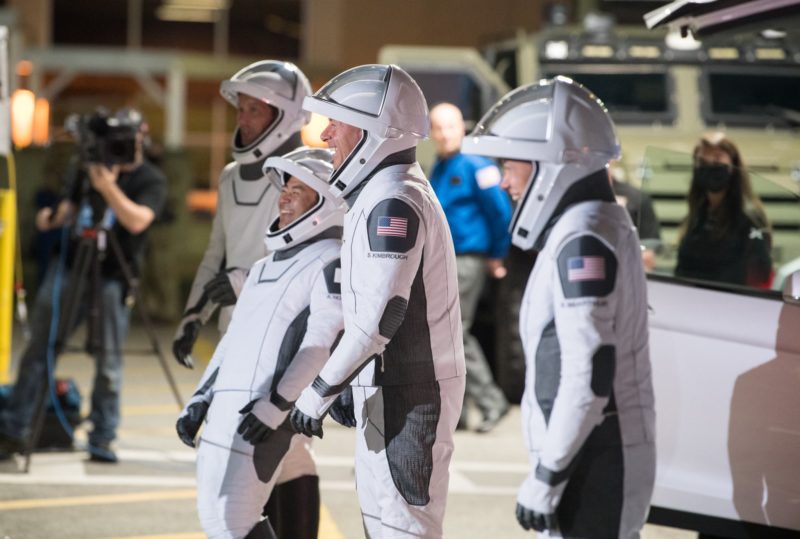
The demonstration ended about 45 minutes prior to the scheduled liftoff time, affording the astronauts perhaps the closest possible analog to what they will experience on Launch Day.
All four members of Crew-2 have flown before. Kimbrough, a 53-year-old retired U.S. Army colonel and a NASA astronaut since 2004, first served as a Mission Specialist aboard shuttle Endeavour on STS-126 in November 2008. During the 16-day flight, he performed a pair of spacewalks to upgrade and maintain the orbital complex.
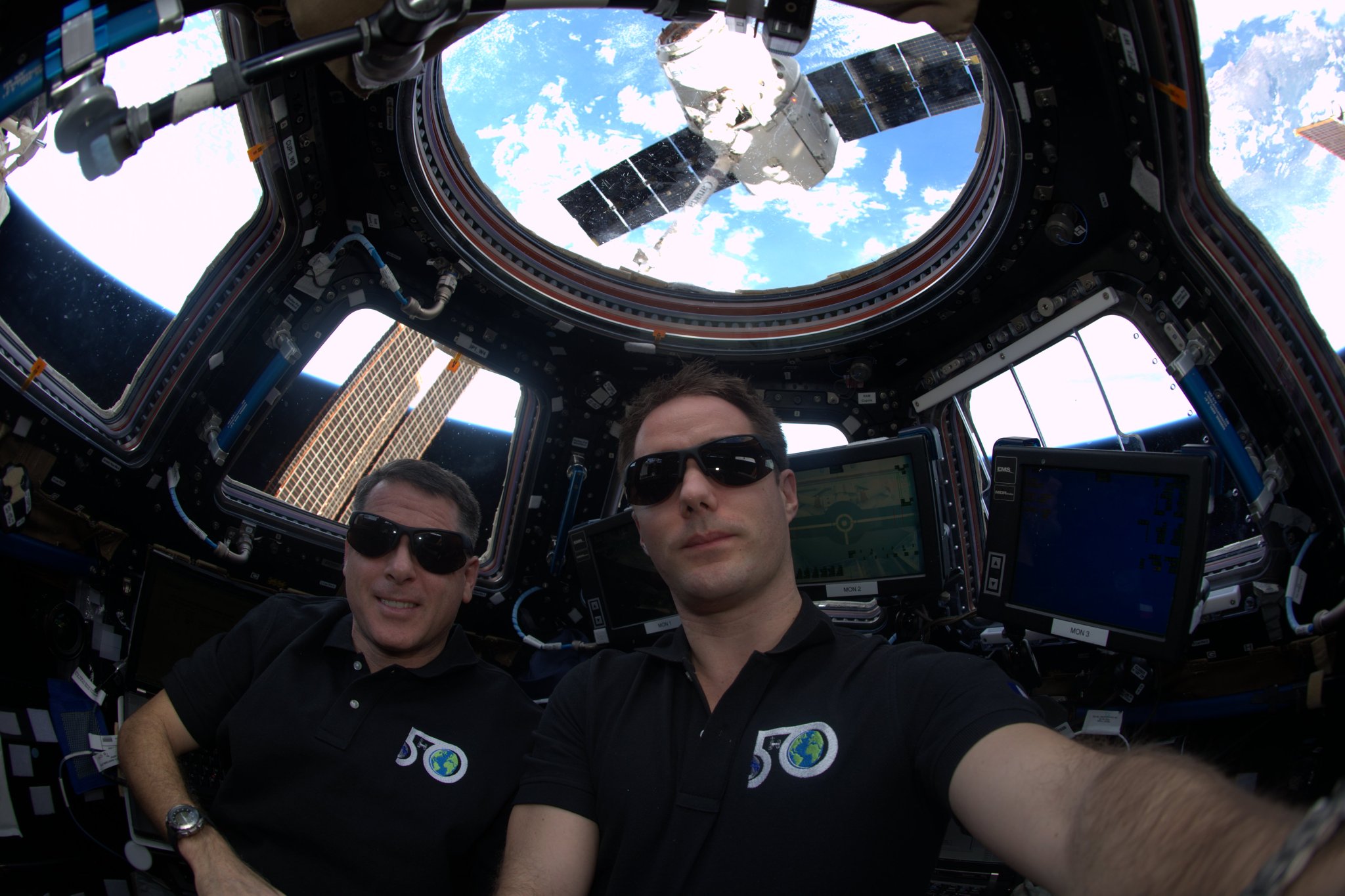
He went on to serve as Flight Engineer on Expedition 49 and Commander on Expedition 50, spending almost six months aboard the ISS between October 2016 and April 2017. All told, he has totaled almost 189 days in space and logged 39 hours on six EVAs.
Forty-nine-year-old McArthur, who was until last summer the deputy chief of NASA’s Astronaut Corps, returns to space more than a decade since her May 2009 flight aboard shuttle Atlantis on STS-125. This 13-day mission completed the fifth and final overhaul of NASA’s scientific showpiece, the Hubble Space Telescope (HST).
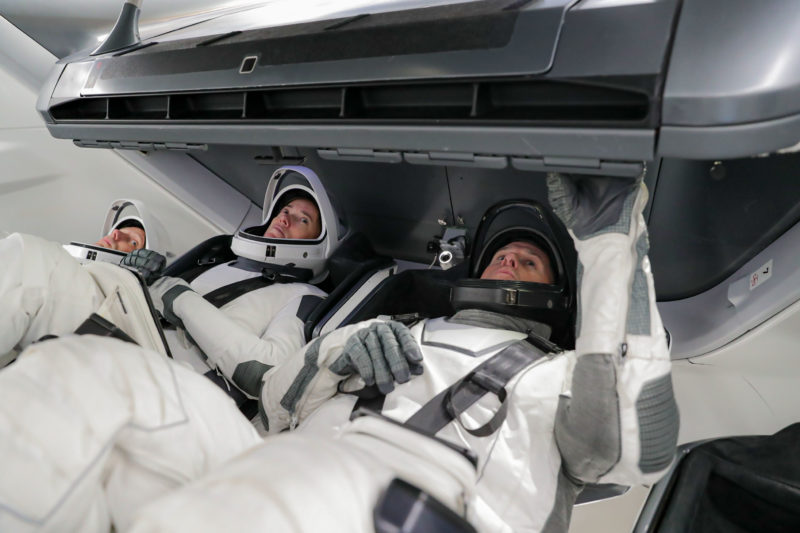
And whilst McArthur may fall far short of her Crew-2 crewmates in terms of the time she has spent in space, in terms of altitude—having traveled to 350 miles (570 km) in order to service Hubble—she has flown far higher than any of them. The ISS, by contrast, typically operates at an altitude of some 250 miles (400 km).
Rounding out the crew are another pair of veterans, with 52-year-old Aki Hoshide becoming only the fourth human after Mercury, Gemini and Apollo hero Wally Schirra, Gemini, Apollo and shuttle veteran John Young and shuttle, Soyuz and Crew Dragon flyer Soichi Noguchi to launch from Earth on three totally different space vehicles.
Hoshide served aboard shuttle Discovery on STS-124 in mid-2008, which installed Japan’s Kibo lab onto the ISS, before flying a Soyuz to space for a four-month tour as a member of Expeditions 32 and 33 between July and November 2012. During his second mission, Hoshide performed three spacewalks, totaling more than 21 hours.
The final Crew-2 crewman, 43-year-old Thomas Pesquet, is the most flight-experienced of them all in terms of days spent in space. Having served aboard the ISS between November 2016 and June 2017—during which time he worked alongside Kimbrough as a member of the Expedition 50 team, before rotating into Expedition 51—he spent more than 196 days aloft on his first mission. Pesquet also completed two EVAs, totaling 12.5 hours.
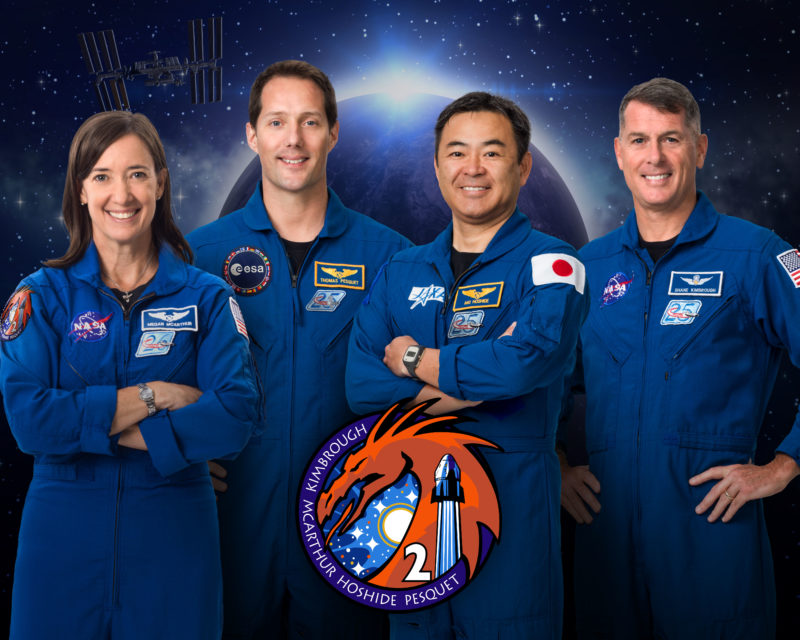
As detailed last week by AmericaSpace, both Hoshide and Pesquet are slated to take turns commanding the ISS during their stay. The station’s current Expedition 65 skipper is Shannon Walker, who will return to Earth on 28 April aboard Dragon Resilience. Before she leaves, she will hand over the ceremonial keys to the station to Hoshide, who becomes only the second Japanese citizen to helm the outpost.
Since ISS “expeditions” begin and end with Soyuz dockings and undockings, he will thus become the second Expedition 65 Commander, a post he will retain until late summer or early fall. Pesquet will then take command for a short period until the Crew-2 team returns to Earth at a point not before 31 October.
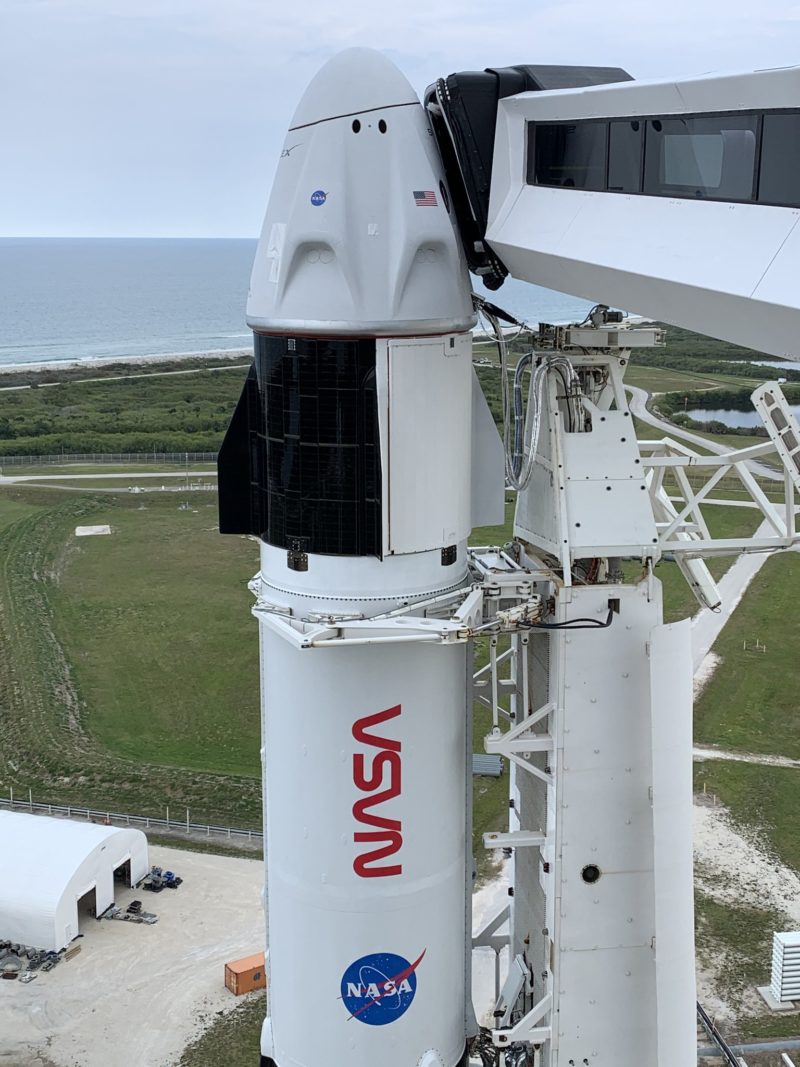
It was noted by ESA ISS Program Manager and former astronaut Frank de Winne that Pesquet will be in command in the late October timeframe, when Crew-3 arrives at the station, allowing him to welcome German astronaut Matthias Maurer aboard.
According to this timeline, the mission will last at least 192 days, making Kimbrough, McArthur, Hoshide and Pesquet one of the most flight-experienced spacefaring crews in history. By the time the quartet return to Earth, they will have totaled more than 1,300 cumulative days, equal to about 3.5 years in space between them.
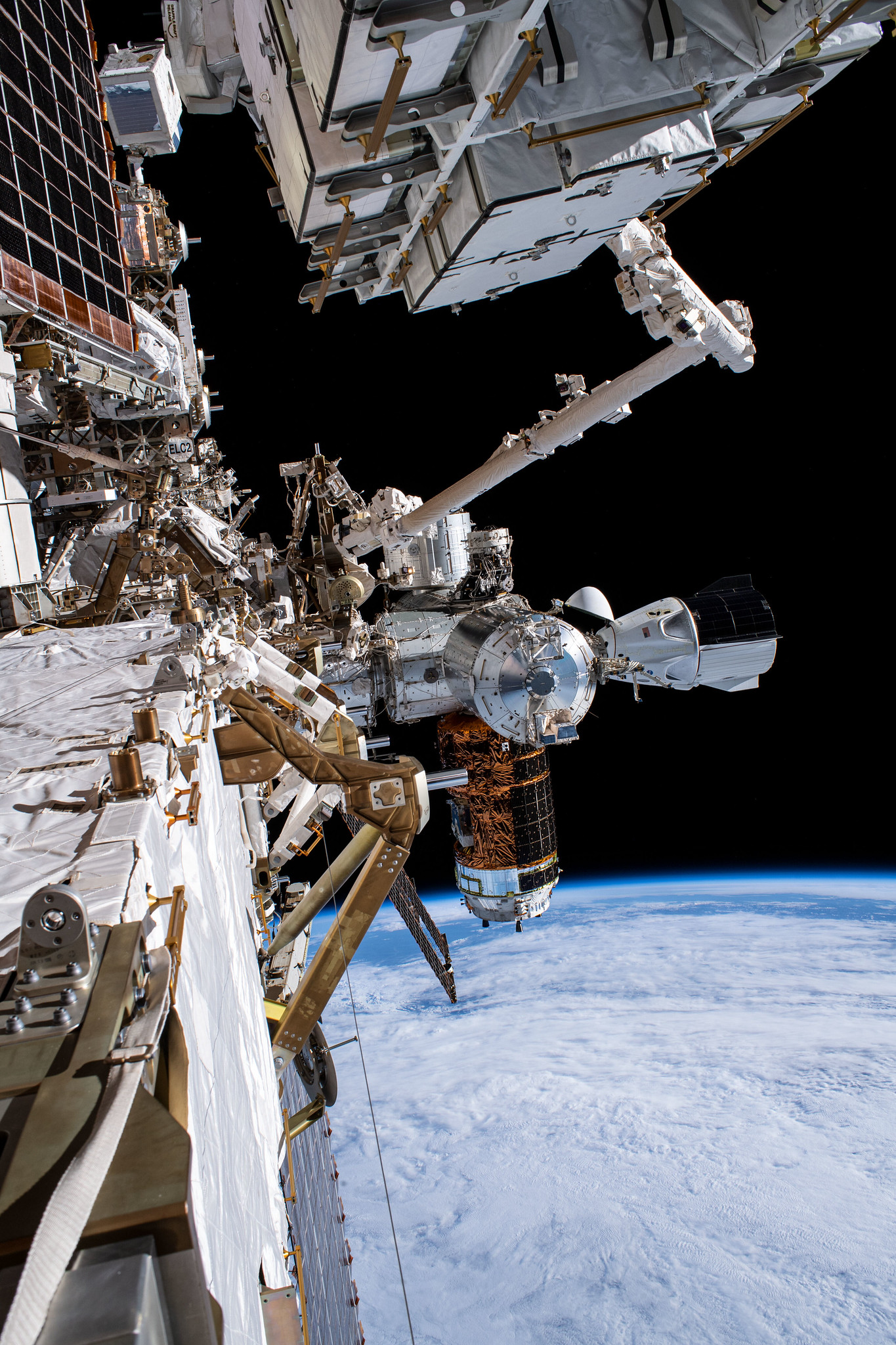
The weather outlook for Friday’s launch is presently about 90 percent GO. for flight. “On Wednesday, high pressure will build in and push the unsettled weather south through the day,” noted the 45th Weather Squadron at Patrick Space Force Base in its Tuesday morning update.
“By Thursday morning, the high pressure will be centered near Arkansas, creating gusty northerly winds along the Space Coast due to the pressure gradient between the high and the departing boundary.”
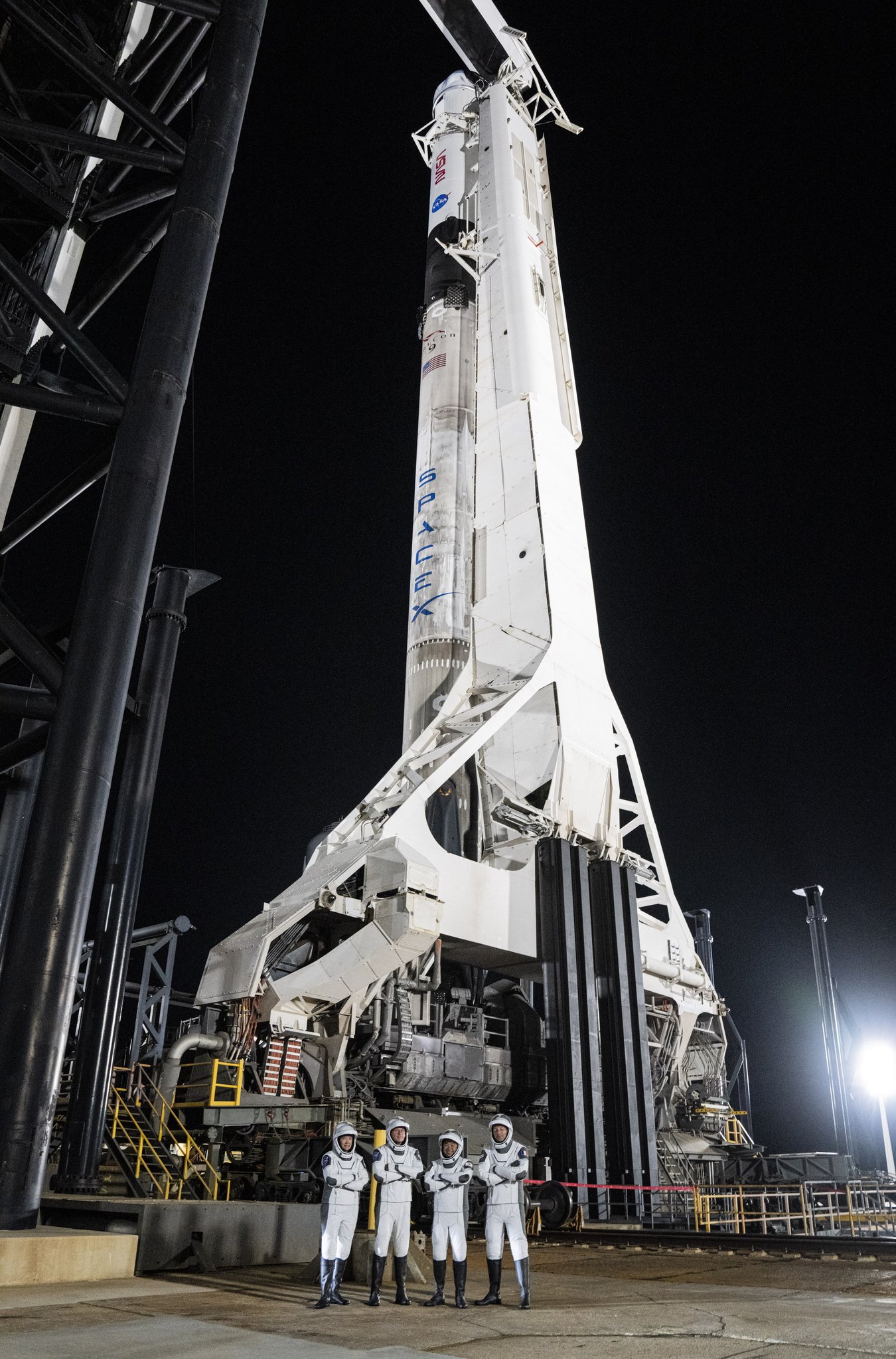
The newcomers will be welcomed aboard the ISS by Expedition 65 Commander Shannon Walker and her crew of Russian cosmonauts Oleg Novitsky and Pyotr Dubrov, U.S. astronauts Mike Hopkins, Shannon Walker and Mark Vande Hei and Japan’s Soichi Noguchi.
This will temporarily expand the ISS crew to 11 members, with an expectation that the Crew-1 quartet of Hopkins, Glover, Walker and Noguchi will return home on 28 April and splash down in the Gulf of Mexico. In his pre-launch comments on Tuesday, ISS Program Manager Joel Montalbano noted that the “direct handover” between the two Dragon crews could conceivably run up to 20 days, if necessary, although current plans are for Crew-1 to come home on the 28th.
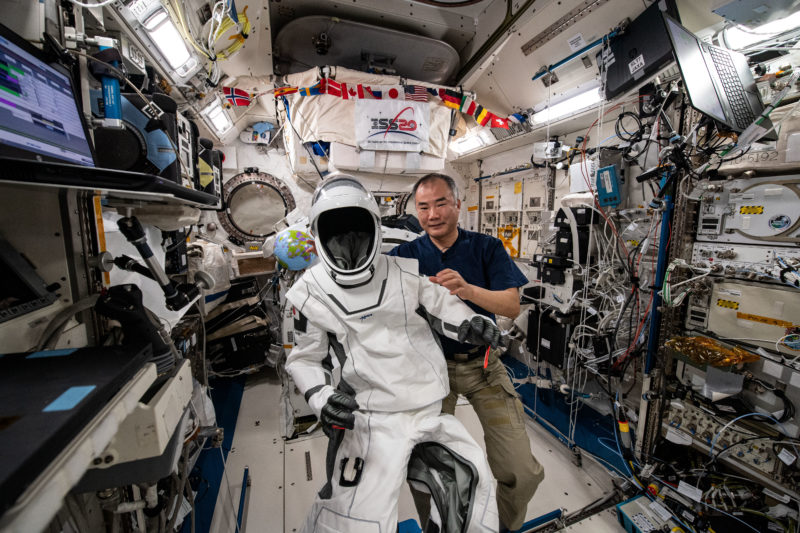
Following the departure of the Crew-1 team, the station will return to normal seven-person operations, with Hoshide in command. Planning through the second half of 2021 remains very much in flux, although as many as nine uncrewed cargo ships—two Russian Progresses in June and October, two SpaceX Dragons in June and August and a single Northrop Grumman Corp. Cygnus in August—are expected to arrive during their increment.
Added to that list, Expedition 65 will see the arrival of Russia’s Nauka (“Science”) lab in late July and the second Orbital Flight Test (OFT-2) of Boeing’s CST-100 Starliner in the August-September timeframe. Notably, aboard Nauka is the European Robotic Arm (ERA), which Pesquet will play a key role in commissioning into service.
.
.
FOLLOW AmericaSpace on Facebook and Twitter!
.
.




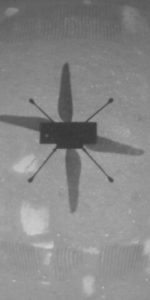
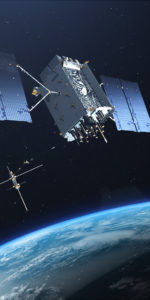
One Comment
One Ping
Pingback:Falcon 9 Marks 4th Launch in Four Months With Midnight Starlink Mission